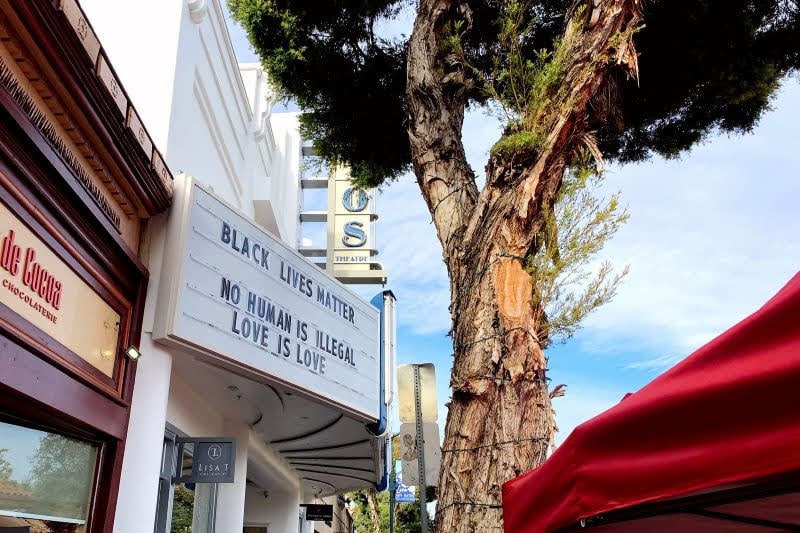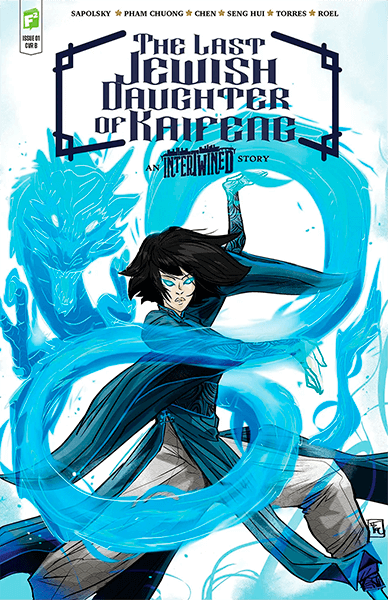I am Syrian, Hawaiian, Colombian, Korean, Israeli, Persian, Mexican, Native American, white, Cambodian, and Indian…or at least that’s what I’ve been told.
I come from an Israeli American mother with a head of big, black curls and glowing olive skin, which I’ve inherited from her. My saba and savta, my mother’s parents, are proud Israelis, children of Holocaust survivors. My savta loves to tell me about the time in her childhood in Israel when the Ashkenazic neighbor yelled at her daughter in Polish to stop playing with the “dirty Sephardic,” my savta, to which her own mother, my great-grandmother, replied in her own refined Polish some version of, “No, thank you.” I have also been inundated with stories of my mother being called “shvartza,” the Yiddish slur for Black, by the other Jewish kids during her own childhood.
I come from a half-white, half-Korean father, from whom I’ve inherited every facial feature. His father, from whom he gets his whiteness, comes from a family living in America since the time of the Mayflower. His mother, who raised him, is a Korean immigrant. My Korean grandmother to this day calls herself “Oriental” and, to say the least, her favorite feature of mine is my big (unAsian) eyes.
I have lived in Pittsburgh since I was seven, and in Squirrel Hill for nine of those 10 years. I studied at Community Day School through eighth grade before enrolling at Allderdice High School. I’ve tried all the Jewish youth groups, prayed at Reform, Conservative, and Orthodox synagogues, attended Jewish summer camps, celebrated my bat mitzvah, learned to speak, read, and write Hebrew, studied abroad with Alexander Muss High School in Israel for two months, joined with family and friends for Shabbat dinner almost every Friday night of my life, participated in IAC and AIPAC conferences, worked as an editor for a Jewish magazine, entered the JCC at least three times a week (before COVID-19), and decided to enlist in the IDF next year. You get it—I’m Jewish, right? Yeah, you’d think.
Whether it comes in the form of questions about how my Jewishness is possible, or subtle suspecting looks, my Jewishness is often up for debate in too many of our Jewish spaces. Why is that? I can tell you in one word: color.
You can imagine based on my familial racial makeup that I don’t have a significant amount of “color.” Sometimes I am immediately recognized as a “person of color,” while other times, I’m assumed to be a white Jew.
In my ninth grade math class I was put in a study group with two other students. One of them asked me the classic question: “What are you?” Before I could answer, he started guessing ethnicities. The other boy in my group, who had previously seen me in Jewish spaces, said “Are you stupid? She’s just white and Jewish.” Boy number one responded by asking if boy number two was blind. This back-and-forth continued on for a while. I had always known that some people saw my “color” the moment they laid eyes on me, whereas others had to see proof of my one Korean grandmother to believe it.
But this was the first time I wondered if, when I have been accepted without question as a Jew, my color was invisible. To Jews, did my color either cancel my Jewishness or my Jewishness cancel my color, never coexisting?
I don’t have an explanation for why some people see me as a person of color and why others do not, but what I have settled on is that at the least, I am not completely white. I have a touch of color.
My touch of color is the reason why I’ve received undeserved (but appreciated) welcomes and warmth in Native American flea markets out West and other spaces with POCs. It is also why I’ve received coldness and funny looks in some Jewish spaces. Racism in America and, unfortunately, in America’s Jewish community is pervasive.
But, in my experience, Pittsburgh’s Jewish community is one of the most welcoming American Jewish communities. Squirrel Hill’s Community Day School is an actively anti-racist environment. My teachers there, Chaim Steinberg, Jackie Goldblum and Cara Shuckett, are visionary educators who have cultivated this culture by leading conversations about tikkun olam, racism, and injustice at every opportunity. All Jewish institutions should follow Community Day School’s lead.
In the Squirrel Hill Jewish community that I know, overt racism is not the problem. The problem is the assumption that all Jews are white—fully white. They are not. We are not. This assumption must be quashed because the consequences of it will be monumental. We will lose our Jews of color. The coldness that I have felt in too many Jewish spaces pushes me into the arms of groups, who unlike the Jewish community, have no real claim to me, but look at me like they do, like I am theirs. Because of this absurdity, I must constantly remind myself who I am and what I am. I am not Syrian, not Hawaiian, not Colombian, not Persian, not Mexican, not Native American, not Cambodian, not Indian. I am Jewish.
I love Pittsburgh’s Jewish community with all of my heart. It is because of this love that I so fervently want us to be better. I ask this for myself and for other Jewish children of color: When you see us in Jewish spaces do not give confused, cold looks. Look at us like we are yours, because we are.







